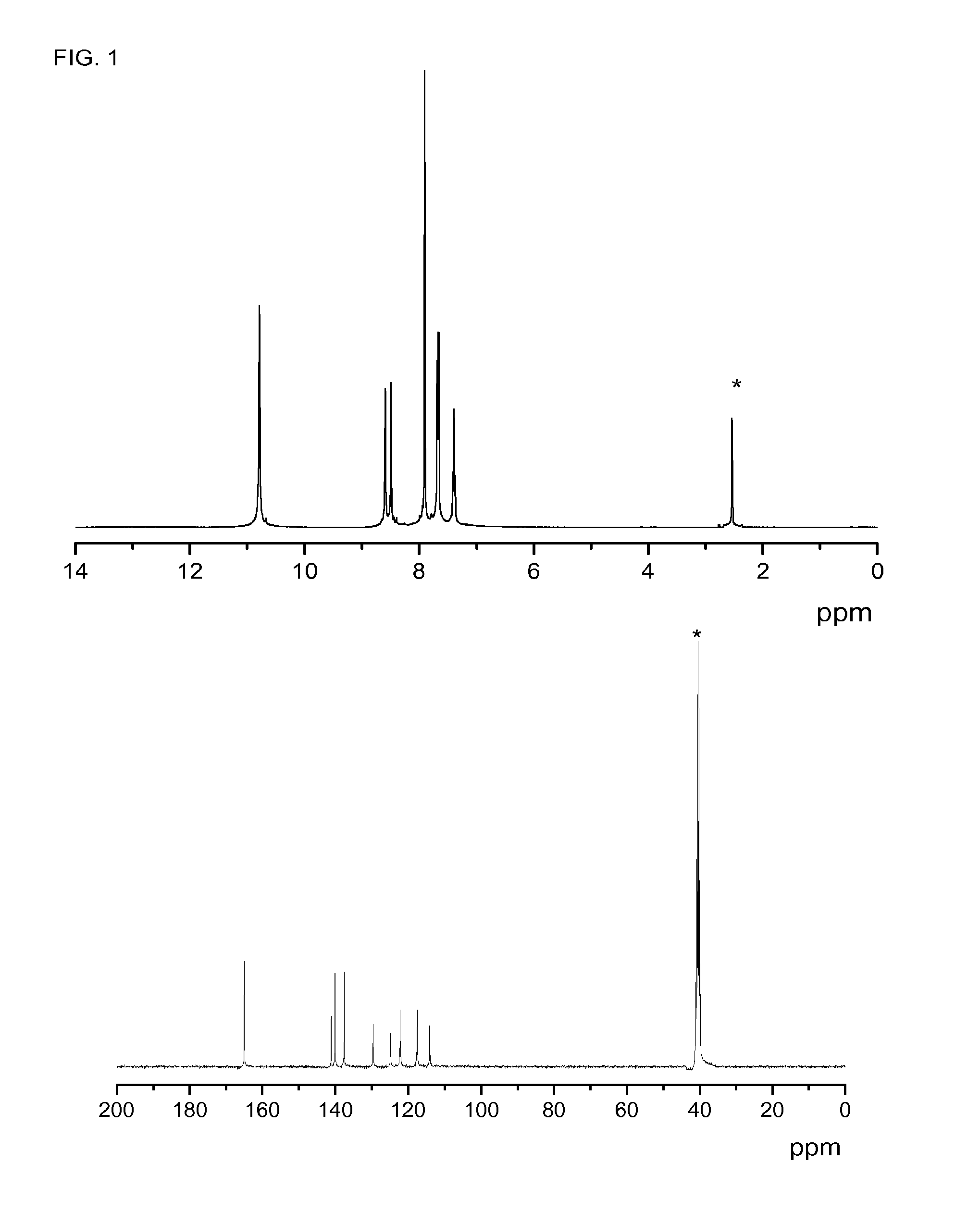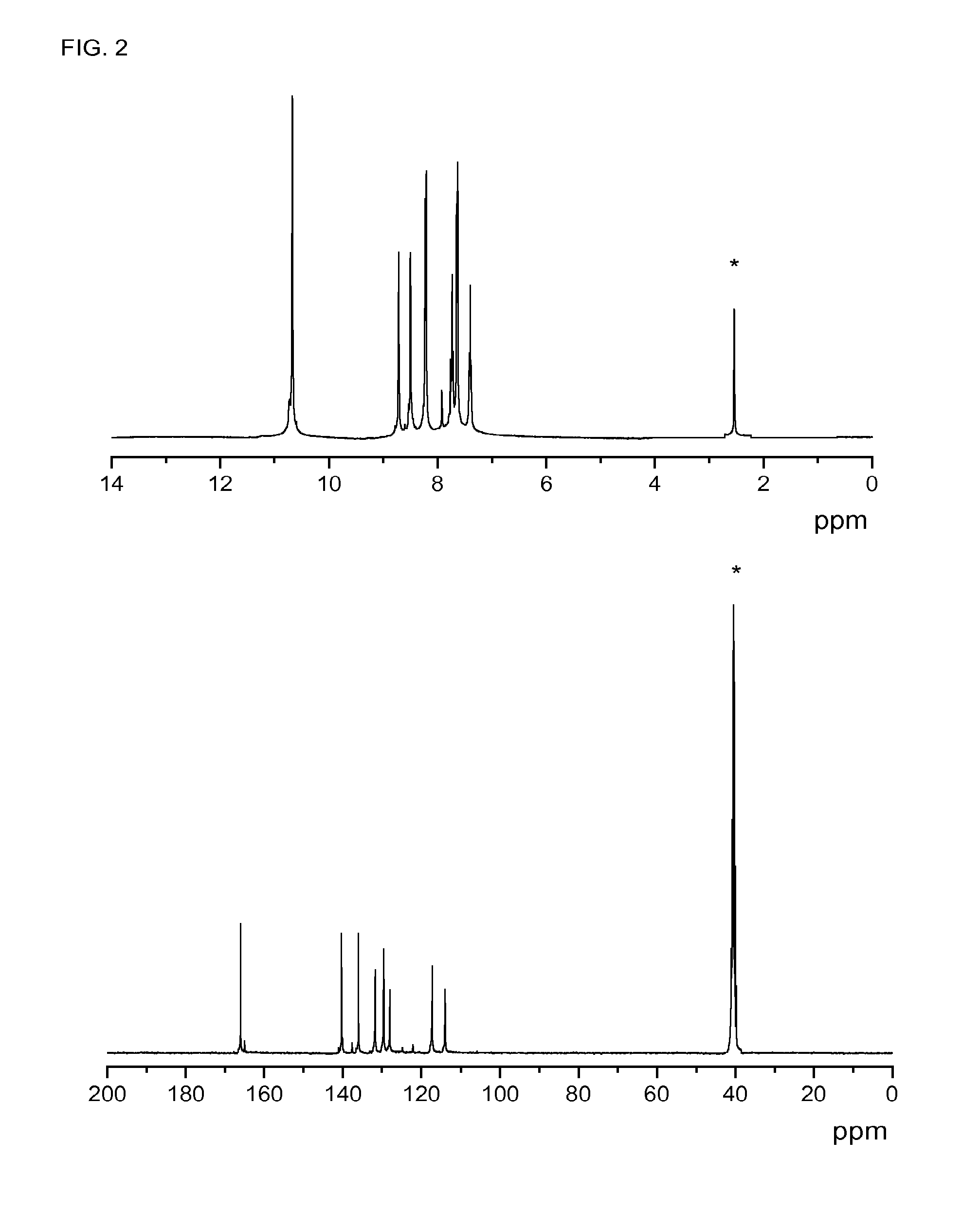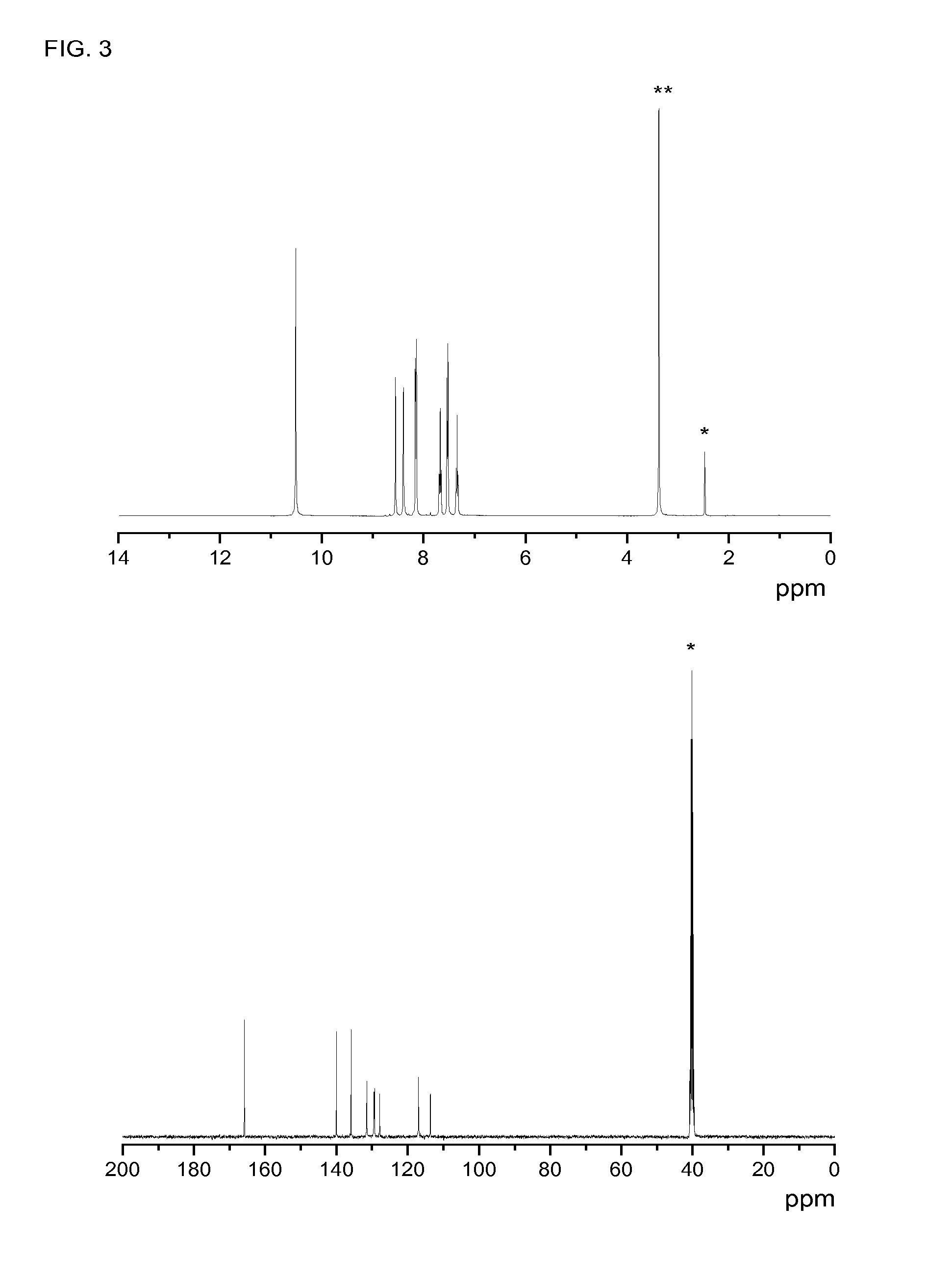Cross-linked aramid
a technology of cross-linked aramid and aramid, which is applied in the direction of coatings, polyamide coatings, etc., to achieve the effect of improving properties and maintaining ease of processing
- Summary
- Abstract
- Description
- Claims
- Application Information
AI Technical Summary
Benefits of technology
Problems solved by technology
Method used
Image
Examples
example 1
Synthesis of Comparative Non-Crosslinked Poly(m-Phenylene Isophthalamide) (MPD-I)
[0110]
[0111]Known m-aramid, poly(m-phenylene isophthalamide), MPD-I commercialized as Nomex®, Teijinconex®, Arawin®, etc., has been prepared as a reference for comparing thermal and mechanical properties of the novel cross-linked aramids of the present invention.
[0112]A 200-mL, double-walled glass flask equipped with a nitrogen inlet and a mechanical stirrer was charged with 80 mL of N,N-dimethylacetamide under a blanket of nitrogen at room temperature. Then, 6.921 g (64 mmol) of m-phenylenediamine (MPD) were added. The solution was stirred at room temperature until diamine solution. Then, the system was cooled to 0° C. with a circulating system. Then, 12.993 g (64 mmol) of isophthaloyl dichloride was added portionwise (four equal amounts) over 5 min, the mixture was allowed to react under nitrogen at 0° C. for 30 min and then at 20° C. for an additional 3.5 h. The final solution was poured slowly into ...
example 2
Synthesis of the Monomer
5-azideisophthaloyl dichloride
Synthesis of 5-azidoisophthalic acid
[0113]
[0114]73 mmol of 5-aminoisophtalic acid were placed in a beaker together with 100 mL of water. 18 mL of HCl (37%) were added dropwise. The mixture was cooled in an ice bath at 0-5° C. 75.3 mmol of NaNO2 were dissolved in 25 mL of distilled water and added dropwise to the mixture, stirring it for 30 minutes. Then, 73 mmol of NaN3 were dissolved in 25 mL of distilled water and added dropwise to the mixture. A solid was formed and gas evolution was observed, making it difficult to keep the stirring. The mixture was stirred until the evolution of gas was no longer detected. The product was then filtered off, washed with distilled water, and dried at room temperature. Yield: 85%. M.p.: 250° C.
[0115]Characterization: 1H-NMR δH (400 MHz, DMSO-d6, Me4Si): 13.20 (2H, s, COOH); 8.23 (1H, s, Ph); 7.73 (2H, s, Ph). 13C-NMR, δC (100.6 MHz, DMSO-d6, Me4Si): 166.77, 141.54, 133.99, 127.17, 124.33. EI-LR...
example 3
Syntheses of a Polymer Model (Model)
[0119]The validity of a difunctional compound as a condensation monomer can be achieved in different ways. The simplest and more effective one is the preparation of a polymer model and with good yield and without by-products. The excellent characteristics of 5-azidoisophthaloyl dichloride as condensation monomer was exemplified with the preparation of the corresponding model upon reaction with aniline under polymerization-like conditions
Polyamide Model
[0120]
[0121]0.72 mmol of 5-azidoisophthaloyl chloride were added to a solution of 1.45 mL of NMP (5% LiCl) and aniline (1.44 mmol) at 0° C. and under a nitrogen blanket. A vigorous stirring was maintained for 30 minutes. The mixture was kept at room temperature for 4 hours, and then precipitated in water, and washed until a pH 7 was reached. Yield: 80%. M.p.: 285° C.
[0122]Characterization: 1H-NMR δH (400 MHz, DMSO-d6, Me4Si): 10.52 (2H, s, NH); 8.43 (1H, s, Ph); 7.9 (2H, s, Ph); 7.85 (4H, d, J 7.99, ...
PUM
| Property | Measurement | Unit |
|---|---|---|
| temperature | aaaaa | aaaaa |
| mol % | aaaaa | aaaaa |
| mol % | aaaaa | aaaaa |
Abstract
Description
Claims
Application Information
 Login to View More
Login to View More - R&D
- Intellectual Property
- Life Sciences
- Materials
- Tech Scout
- Unparalleled Data Quality
- Higher Quality Content
- 60% Fewer Hallucinations
Browse by: Latest US Patents, China's latest patents, Technical Efficacy Thesaurus, Application Domain, Technology Topic, Popular Technical Reports.
© 2025 PatSnap. All rights reserved.Legal|Privacy policy|Modern Slavery Act Transparency Statement|Sitemap|About US| Contact US: help@patsnap.com



